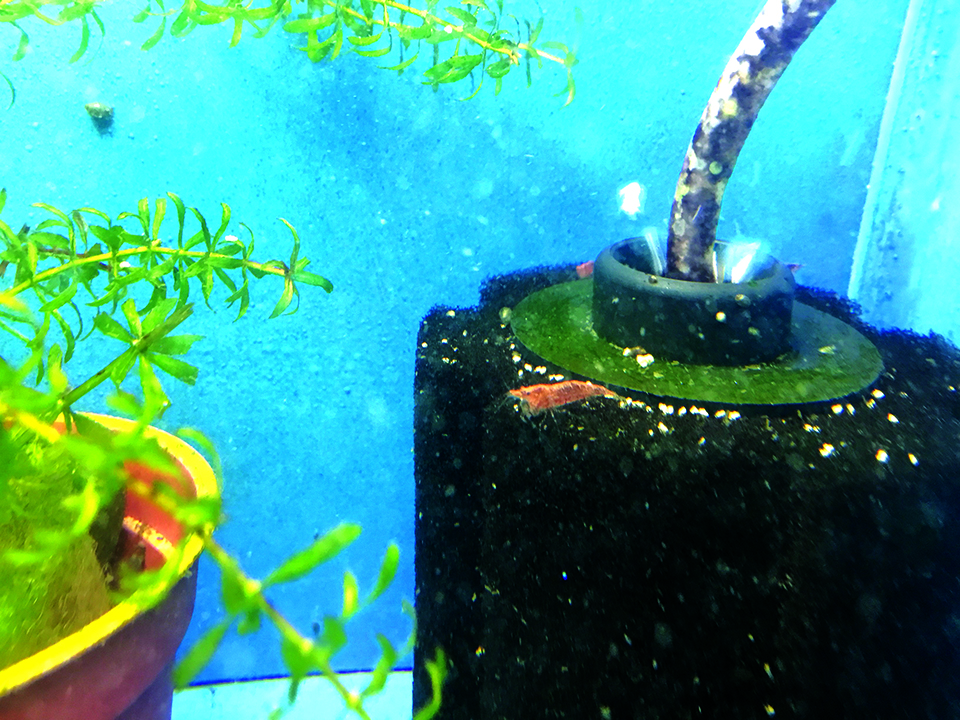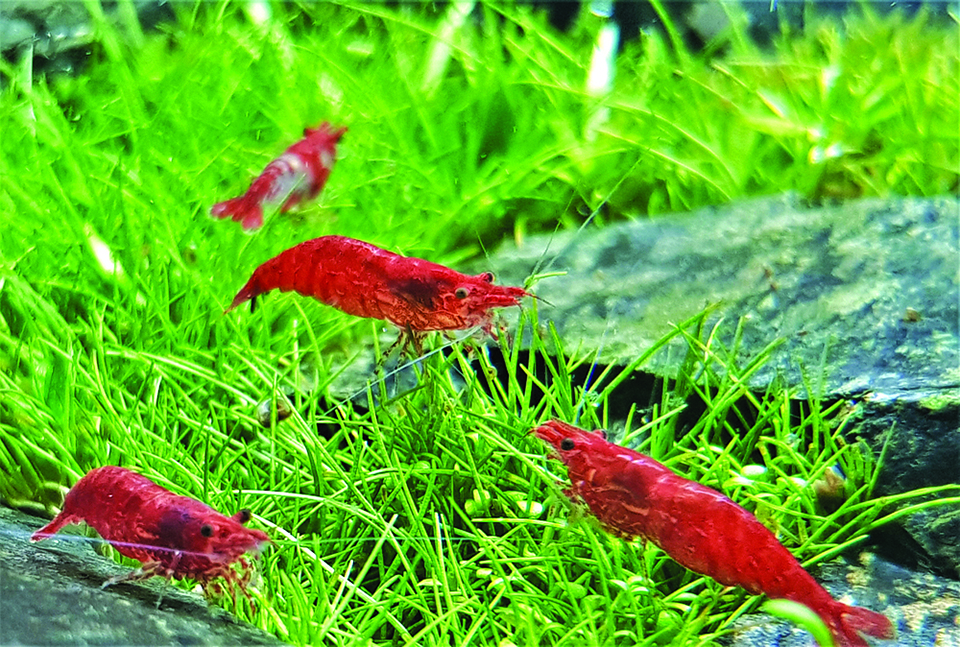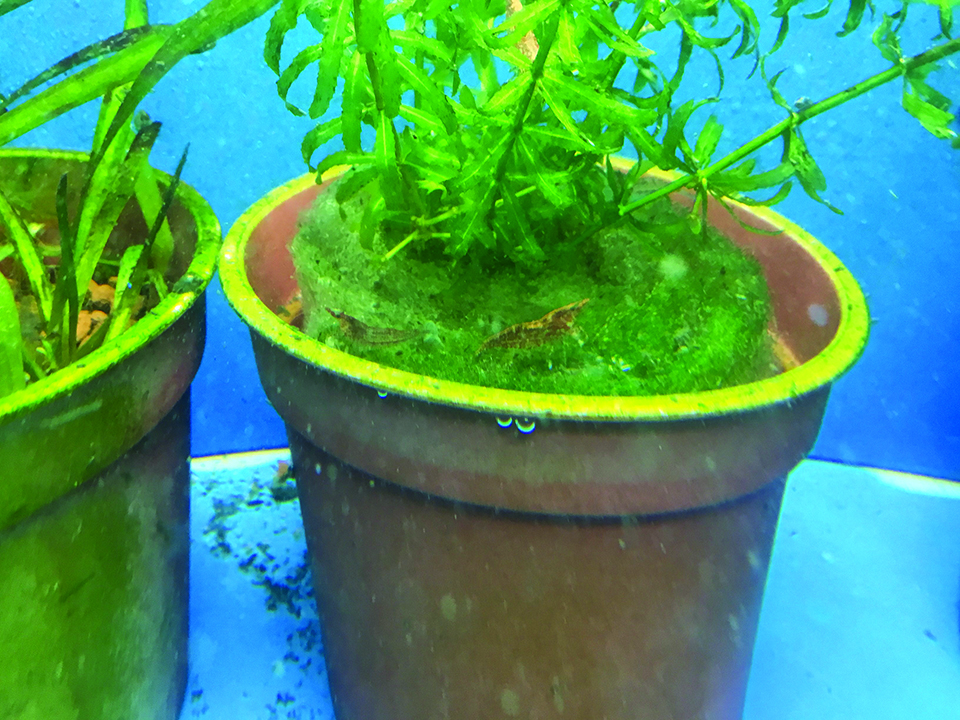WHY RED CHERRY SHRIMPS MAKE INTERESTING AQUARIUM CREATURES
In earlier days, aquarium plants are considered as merely secondary accents, serving to prettify the aquarium setup. Presently, aquarium plants now belong to a league of their own, what with tropical fishes being kept as accents in planted tanks. Maintaining them requires silent helpers as cleaners, and that is where freshwater shrimps come to mind.
I used to buy live freshwater shrimps from the wet market to feed large cichlids, such as Oscars. I was astonished when one day, a friend of mine gave me a few ghost shrimps. They are so small that it was hard for me to imagine that such shrimps existed. Without much thought, I placed the ghost shrimps in a small pond with plants and, in no time, I noticed them growing in numbers. From then on, making sure there were freshwater shrimps became a part of my aquatic hobby.
Shrimps are decapod crustaceans with elongated bodies. They are stalk-eyed with long narrow tails and antenna-like whiskers. They also have slim legs, which they use primarily for perching. Shrimps are great scavengers capable of clearing out uneaten food in a tank.
After ghost shrimps, I decided to try a more colorful variety. I chose red cherry shrimps because they were readily available at that time at a reasonable price.

ALL ABOUT RED CHERRY SHRIMPS
Red cherry shrimps were introduced to the aquarium trade in 2003. They are colorful, sociable, peaceful, easy to care for, reproduce quickly, and eat a lot of algae, including the dreaded hair algae. Best of all, they eat algae without harming the plants.
Red cherry shrimps are non-aggressive and active during both day and night. Often, we can see them grazing on algae, eating food and debris, mating, or gliding across the tank.
They come in various colors, from deep dark red to paler shades.

SHRIMP FACTS
FEMALES ARE BIGGER
Adults grow to approximately 1 to 1¼ inches long, with the females being larger than the males.
THEY’RE NEAT FREAKS
They prefer clean water with a pH of 6.5 to 8.0.
THEY AREN’T PICKY
They are omnivores and typically live one to two years under ideal conditions. Be sure to keep all foods, supplements, or chemicals that have copper out of your shrimp tank.
THEY THRIVE IN CLEAN WATERA
partial water change equal to one-fourth of the tank weekly is recommended.
CARE TIPS
If you’re caring for red cherry shrimps, here are a few things you should know.
THE FEMALES ARE BIGGER
The females are a brighter red compared to their male counterparts, especially when sexually mature. The males are slightly smaller with a slimmer midsection.
THEY CAN ADAPT TO DIFFERENT TANK SIZES
Red cherry shrimps adapt to a wide variety of conditions. They can be kept in a tank aquarium with a capacity of two gallons up to an ideal size of 15 gallons. The size also depends on how many shrimps there are. A larger tank will always be better, especially when they are ready to mate and reproduce.
Shrimps love hiding spaces, so it is important to include a variety of plants where they can sit on and feel safe.
This is critical after molting, one of the most susceptible times for the shrimp.
THEY LIKE PLANTS
The tank setup should include plenty of live aquarium plants. These shrimps need to have lots of places where they can perch, crawl, and explore.
They make a great addition to a planted tank; they thrive happily in such an environment. While eating almost every kind of algae in the tank, they will do no damage to live plants. Their bright red colors will really pop out amidst a backdrop of green in a planted tank.
In my tank, you’ll find Hornworts, Elodea, Vallisneria, and Anubias plants.
SPONGE FILTERS DO THE JOB
A sponge filter is the best one for red cherry shrimps. The sponge media will trap little bits of food and debris, and the shrimps will spend hours picking on it.
THEY ARE OMNIVOROUS
Red cherry shrimps are omnivores. They will eat almost any aquarium food, but they do adore sinking shrimp pellets. Some also feed them blanched vegetables, such as carrots and cucumber.
The key to feeding shrimps is moderation. It is easy to put too much food into the tank, which can then become polluted quite easily. Underfeeding shrimp actually poses less problems than overfeeding them, although of course it is best to feed them an adequate amount.

IS THAT A DEAD SHRIMP?!
One very interesting characteristic of shrimps is that they shed their exoskeleton (a rigid external covering for the body), which provides both support and protection. It is important not to remove this when you see it in the tank, because the shrimp will consume it to replenish their needed minerals.
If you find shrimp skeletons in your tank, do not be alarmed: The shrimps are not dead; simply molted. As they grow, they will continue to regularly shed their outer shell.
THE MORE, THE MERRIER
Red cherry shrimps can reproduce in a freshwater aquarium. A female shrimp will carry her eggs under her tail, in which case she is described as “berried.” For them to propagate, they should have reached adulthood, and there should be an abundant number of live plants with fine, dense leaves, such as Hornwort, Elodea, and Cabomba.
With the right water conditions and a well-balanced diet, red cherry shrimps propagate easily.
Red cherry shrimps reach sexual maturity after three months. At this time, you will notice the females developing a deeper red color. If you look closely, females will carry approximately 10 to 30 eggs that appear yellow in color.
SHRIMP BFFS
MERRIERWhen choosing tank mates for your red cherry shrimps, a little common sense is in order. While these shrimps are peaceful and would never harm your fish, there is no guarantee that the fish won’t harm them. Due to the tiny size of these shrimps, select carefully any fish you place in the same tank. Small tetras, rasboras, and other non-aggressive small fish should be fine.
Red cherry shrimps are fast-moving creatures, but due to their size, many fish can easily eat them if they can fit in their mouth. Snails are great additions for red cherry shrimps, because they won’t eat them, including the babies.
Red cherry shrimps are available from many different sources. There are now many types of shrimps with several colors to choose from. Make sure they don’t mate with shrimps of other colors for them to maintain their original vibrant color.
They are very entertaining to watch, and as long as you observe the basic guidelines mentioned, you will find that taking care of red cherry shrimps is rather simple.

It is recommended to keep two tanks if possible, so that if the other gets water parameter issues that might cause unavoidable deaths, you still have a spare community of shrimps.
FurFor questions, please email [email protected].“The Lord is not slow to fulfill his promise as some count slowness, but is patient toward you, not wishing that any should perish,but that all should reach repentance.” 2 Peter 3:9 ESV






